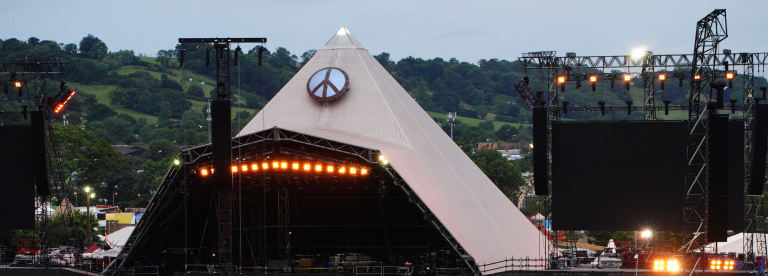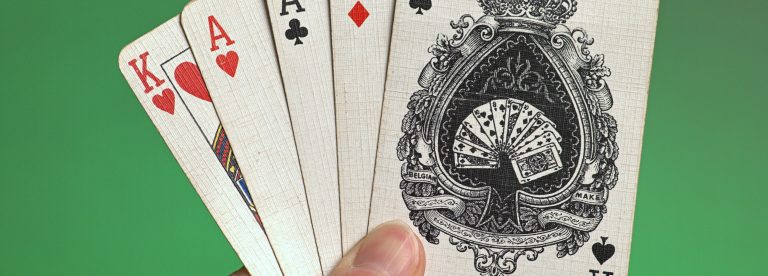Casino
Omaha Hold’em Poker Rules

What is Omaha Hold ’em?
Omaha Hold ’em has quickly become one of the most-popular poker variants. With a fun and simple playing style, including more combinations of winning hands, it’s a fast-paced alternative to the tactics and endurance of Texas Hold ’em and traditional poker.
Within Omaha Hold ’em there are several different styles, including ante and no-limit games, but pot-limit Omaha (often referred to as PLO) is most common both in casinos and online.
Omaha Hold ‘em is similar and often compared to Texas Hold’ em, another popular community card game. If you already know the basics of Texas Hold ’em, then Omaha Hold ‘em will be fairly easy to get to grip with. Some even argue that pot-limit Omaha is on course to overtake Texas Hold ’em in popularity in the not-too-distant future!
So what is the main difference between Omaha Hold ’em and Texas Hold ’em? In Omaha Hold ‘em, you are dealt four-hole cards instead of two, and you’re only allowed to use three community cards along with two of your four-hole cards to make a five-card hand.
If you’re new to poker, then we recommend learning about poker and the different variations to get the hang of the rules before jumping in. But if you prefer to learn by playing, then you can always try a practice game and play without money while you learn the ropes.
How to Play Omaha Hold ’em poker
Omaha Hold ‘em rules are incredibly similar to Texas Hold ’em, so if you understand how to play Texas Hold ’em, you’ll find this stage very easy.
The Blinds
Before starting any game, the player immediately to the left of the dealer makes an initial forced bet (known as the small blind). Then the player to the left of them posts the ‘big blind’, the other forced bet that makes sure the game progresses and that there’s always something to play for in the pot. This is usually twice the amount of the small blind but can sometimes vary.
Pre-Flop
Upon viewing their four private hole cards, players can call or raise the big blind. The action moves clockwise from the big blind, and each player may fold, call or raise. There is betting at every round, which continues until all players (except those who have chosen to fold) have put the same bets in the pot (known as ‘calling’).
The Flop
At this point the dealer places three cards on the table, face upwards – an action called the ‘flop’. These communal cards are available to every player remaining in the game with a live hand. Flop betting starts with the player to the immediate left of the button. Betting options are much like the pre-flop, but if no one has placed a bet so far, players can decide to check and pass the action clockwise to the next player.
The Turn
When the flop round of betting is finished, the ‘turn’ card is placed on the table, face up. After this fourth communal card has been placed, another round of betting commences. Once again, this starts with the player immediately to the left of the dealer.
The River
When the ‘turn’ round of betting is finished, the ‘river’ card is placed on the table, facing up. This is the fifth and final communal card in an Omaha Hold ‘em poker game. A final round of betting takes place, again starting with the player immediately to the left of the dealer.
The Showdown
If more than one player remains in the game after the final betting round, the last player to bet or raise shows their cards first. But if there were no bets in the final round, the person immediately to the left of the dealer will be the first to show their hand.
The winner is the player with the best poker hand ranking. If players present identical hands, the pot is split equally between those with the best poker hands.
It important to remember that Omaha Hold ’em hands are constructed from two of your four-hole cards, and from three of the five community cards.
Hi-Lo Omaha
Hi-Lo Omaha is the second-most popular form of Omaha poker, just behind PLO. In this form of poker, the pot is divided between the best hand for high, and the best hand for low, if you didn’t get the memo from the name.
You are allowed to construct both a high and a low hand and use different hole cards for each. The low hand must have five cards ranked eight or below (7,6,5…) or will be disallowed from winning the pot, which will all go to the high hand. There are certain hand rankings specific to Hi-Lo and different variations based on the limit. Conduct thorough research before playing.
Hi Omaha vs Hi-Lo Omaha
The difference between Hi Omaha and Hi-Lo Omaha is similar to the difference between Hi poker and Hi-Lo poker. In Hi Omaha, the player with the highest hand at the showdown takes the entire pot, while in Hi-Lo Omaha, the pot is split between the player with the highest hand and the player with the lowest qualifying hand. As in Hi-Lo poker, the qualifying low hand in Hi-Lo Omaha must have five different cards, eight or lower. In Hi-Lo Omaha, players must consider the potential for both a high hand and a low hand, which can make the game more challenging and strategic than Hi Omaha. Players must carefully evaluate their hand and the community cards to determine their best possible high and low hands.
Omaha Poker Variations
Omaha poker has three main variations with different betting structures. Both Omaha Hi and Omaha Hi-Lo can be played in any of these three betting structures:
- PLO – Pot Limit Omaha
- No Limit
- Fixed Limit
PLO – Pot Limit Omaha
The minimum and maximum raises are an important part of pot-limit Omaha poker. The minimum raise is the value of the previous bet. For example, if ‘Player A’ bets £5, ‘Player B’ must raise a minimum of £5.
The maximum amount possible to raise is the size of the pot, which is all of the cumulative bets on the table. In the early stages of the game, the limit will usually be quite low. For example, if the pot size is £100, then players cannot raise by more than £100. There is, however, no limit on the number of raises allowed per round.
No Limit Omaha Poker
Similarly to PLO poker, in no-limit Omaha poker, the minimum raise is the value of the last bet amount, for example, if ‘Player A’ bets £5, ‘Player B’ must raise a minimum of £5.
As the name might suggest, in no-limit Omaha, there’s no limit, except your bankroll when it comes to how much you can raise for a bet. So, the only hard limit is the size of your chip stack! There is also no limit on the number of raises allowed per round.
Fixed Limit Omaha Poker
Fixed-limit Omaha is by far the most structured and regulated form of playing pot-limit Omaha, as there isn’t much room for freedom in the choice of bets and actions. The betting amounts are pre-determined, so you’ll know exactly how much you’ll need to put down at each stage of the game.
During the pre-flop and on the flop, the big blind sets the wager, and all bets and raises follow them. During the turn and the river, the amount players bet doubles. Another key difference is that there is a cap of four raises per player in each round.
Difference between Poker and Omaha Hold ’em
- The main difference between classic poker and Omaha poker is the inclusion of community cards
- You do end up with a five-card hand, but it’s different to Texas Hold ’em which consists of a seven-card hand
- Another difference is the appearance of four hole cards
- Based on the style you choose to play, the limit is also different between poker variations, especially in a game like Hi-Lo Omaha which is incredibly unique to other variations
Omaha Hold ’em Poker Rankings
Many players prefer Omaha due to the larger chance of having a winning hand, due to the two extra hole cards. Here are the winning poker rankings in PLO poker:
| Rank Order | Hand Name | Description | Probable Occurrence | Combinations |
|---|---|---|---|---|
| 1 | Royal Flush | All the same suit, sequence A-K-Q-J-T | 1 in 649,737 | 4 |
| 2 | Straight Flush | Five cards in a row, all in the same suit e.g. 5-6-7-8-9 | 1 in 72,193 | 36 |
| 3 | Four of a Kind | Four cards of the same value e.g. K-K-K-K-7 | 1 in 4,164 | 624 |
| 4 | Full House | Three of a kind as well as a pair e.g. J-J-J-Q-Q | 1 in 693 | 3,744 |
| 5 | Flush | Five cards all the same suit e.g. 5-6-Q-2-10 all Spades | 1 in 508 | 5,108 |
| 6 | Straight | A basic numeric sequence, but different suits, e.g. 7-6-5-4-3 | 1 in 253 | 10,200 |
| 7 | Three of a Kind | Three cards of the same value, plus two not paired e.g. 9-9-9-7-K | 1 in 46 | 54,912 |
| 8 | Two Pair | Two pairs e.g. Q-Q-7-7-4 | 1 in 20 | 123,552 |
| 9 | One Pair | Any one pair e.g. 2-2-6-J-K | 1 in 1.36 | 1,098,240 |
| 10 | High Card | No matches, highest card only e.g. K-Q-7-4-2 | 1 in 0.99 | 1,302,540 |
Play pot-limit Omaha poker at William Hill
We’ve got plenty of fantastic PLO games waiting for you to get stuck into at William Hill and William Hill Vegas! With live tables including real casino croupiers, to virtual Omaha poker for gaming on the go, you can try a few different tables before finding the right one for you.
And with on-hand gaming support, in-game rules and all limits and amounts displayed clearly, you can play knowing you’re in control of your game and still having plenty of fun.
Head to William Hill’s online poker games today!







